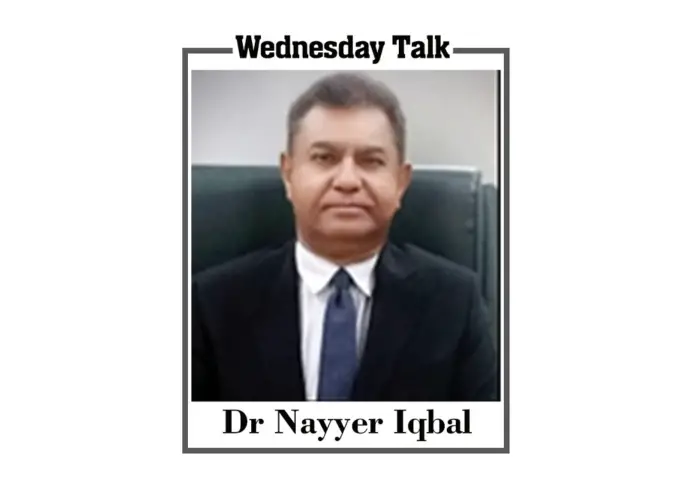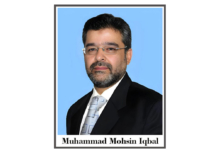Xi Jinping, the Chinese president since 2013 and recently re-elected for another five years, was born exactly in the middle of June i.e. 15.06.1953 in the Shaanxi province. The politics runs in his blood as his father was an active politician of national stature who was an early comrade-in-arms of Chairman Mao Zedong and later rose to the level of country’s Deputy Prime Minister. It is noticeable that an element of ‘dissidence’ has been passed on to him genetically as the elder Xi opposed the Mao’s celebrated ‘Cultural Revolution’ (1966-1976) leading to his ouster from the government; and later publically denounced the harsh handling of the 1989 Tiananmen Squire protest. After his father’s purge in 1969, leaving behind the ‘luxuries’ of Beijing, he had to accompany his family to the countryside where he worked as a manual laborer consecutively for six years on an agricultural commune. During this phase of life, he underwent such experiences which eventually played a meaningful role in his rise through the ranks of the ‘Chinese Communist Party’ (CCP). He graduated in chemical engineering from Beijing’s Tsinghua University in 1979 and started working on petty assignments of CCP which he had already joined in 1979. He remained posted in Fujian province for a considerably long period and rose to the position of Provincial Governor in 2000. His tenure was conspicuous for his interest in environmental conversation and co-operation with nearby Taiwan. During this stay Jinping also married acclaimed folk-singer Peng Liyuan in 1987. He got another boost in 2002 when he was given the dual role of Governor plus Party Secretory in Zhejiang province. Here, he concentrated ‘on restructuring the province’s industrial infrastructure in order to promote sustainable development’. Luck favored him once again in 2007 when Party Secretary of Shanghai was removed due to a corruption-related scandal and Xi Jinping was ordered to take the charge. His tenure at Shanghai remained short however he tried his best to stabilize and rehabilitate the city’s financial image. In October 2007, he was nominated as one of the nine-member standing committee of the CCP’s Politburo, the top-most governing body of the party. Xi’s status was further elevated by his election as vice-president of China: a role where-in he ‘focused on conversation efforts and on improving international relations’. Finally, on March 14, 2013, he was elected President of China by the National People’s Congress and he has been maintaining that position till today. During his incremental rise in politics he made a reputation for prudence and being a staunch follower of the party-line.
President Xi Jinping took the start with his anticorruption campaign during which strict actions were taken, irrespective of anyone’s politico-official status. Between 2012 and 2020, at-least 2.5 million proven culprits were awarded punishments of various degrees, which included removal from service, imprisonment and even death penalty. Apart from that, 11.3 million were issued warnings and 4.7 million were either directly investigated or kept under-surveillance. His opponents, both domestic and foreign, accused him of using the drive to get rid of his opponents and silence the dissent. The charge was not totally baseless: actually it was a masterstroke through which Xi on the one hand reduced the ‘social discontent’ due to perceived level of public-sector corruption and on the other, purged the bureaucracy from the undesired elements. Simultaneously, he stood firm for the ‘rule of law’, ‘adherence to the Chinese constitution’ and ‘the highest level of professionalism in judiciary’. The changed environment enhanced Xi’s stature manifold.
President Xi Jinping was highly conscious of ‘irrationality’ of economic structure and fast-widening ‘wealth-gap’. By 2012, the annual growth rate of China had started declining after remaining around 9% for number of years and touching even 10%; and inequality had risen above 13% as per Gini Index leading to public unrest. The work-force was reducing expeditiously due to prolonged ‘one-child policy’ and other population control measures. The labor-strikes were rampant i.e. 1300 strikes in 2014 rose to 2700 in 2016; certainly a dangerous trend for economy and law and order. However, Xi’s intelligent and courageous decisions reversed the situation within few years. Through government officials door-to-door visits he got prepared an accurate assessment of people’s living standards, their live-stock and access to education; and planned accordingly. During the first ten years of government, he was able to eradicate poverty to a considerable extent. Whereas in the year 2012, 82 million people lived in extreme poverty, by 2022 only 6 million were left in that bracket due to investment of $230 billion in schemes relating to housing and infrastructure like roads and bridges; and more-so through relocation of poor people to places with better economic opportunities. During the same period, the average disposable income per urban house-hold surged by 66% and the rural house-hold by 82%. Urbanization also increased significantly, however authentic statistics could not be traced in this regard. President Xi took measures to gradually restructure China’s state-owned enterprises (SOEs); enabling them to compete with foreign and private-sector players. In result of private-sector friendly policies, by 2022, their share in the economy increased from 10% to 40%. Xi also relaxed restrictions on foreign direct investment (FDI) and encouraged cross-border holding of financial instruments. Side by side, he did not permit to loose state-control over the economy and supported SOE’s through all means. The launching of Shanghai ‘Free Trade Zone’ was also a mentionable step.
President Xi’s economic policies bore fruit and GDP in nominal terms doubled from $8.53 trillion in 2012 to $17.73 trillion in 2021, however growth squeezed from 7.9% in 2012 to ^% in 2019. Meanwhile, China’s nominal GDP per capita surpassed the world average in 2021. Lately, Xi Jinping introduced the policy termed ‘dual circulation’ which meant re-orientation of the economy towards domestic consumption while remaining open to foreign trade and investment. He also emphasized on ‘productivity’ and discouraged increase in property prices thus cutting economy’s dependence on real-estate sector. Xi pushed through a ‘property tax’ despite opposition by influential of the CCP. Xi also promoted ‘Made in China-2025’ plan that aimed to make the country self-reliant in key technologies under-which $100 billion were allocated to secure semi-conductor independence; technology companies like Huawei were lured-in through multiple concessions; and Xiongan near Beijing and Tianjin in Hebei province were planned to become ‘modern socialist cities’ by 2050. Since 2021, Xi has popularized the idea of ‘common prosperity’ which means ‘affluence for all’ and to meet this objective several measures were taken to involve the ordinary people in financial activities. The establishment of a new stock exchange in Beijing exclusively for small and medium enterprises was an important step in this regard.
The progress in transport sector was also note-worthy. The length of the high speed rail net-work was quadrupled from 9300 kms in 2012 to 40,000, kms in 2022. The number of civilian airports totaled 250 after addition of 82 by the Xi government. The improvement of communications boosted travel and tourism, stimulated the economy, and opened the less-developed western-part of the country.
Xi, being conscious of the fact that China was considered to be the world’s biggest emitter of green-house gases attached due importance to the issue. He signed the ‘Paris Climate Agreement’ in 2016. In 2020, he committed that his country would fast reduce its carbon emissions after touching the peak in 2030 and aimed for carbon neutrality by 2060. The government also started publishing more elaborate data on air pollution, launched waste separation schemes and introduced various result-oriented measures for this purpose (to be continued).







